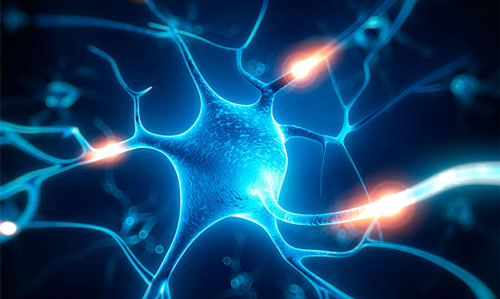Researchers in aging tie genes to brain degeneration
March 16, 2018
Source: fiercebiotech
 651
651

As brain cells age, they lose their ability to perform basic functions, often leading to dementia and other neurodegenerative disorders. But what’s behind this decline, and can it be stopped? Two new studies out this week uncover links between genes and brain-cell functioning that could provide new targets for therapies aimed at neurodegenerative diseases.
Investigators at the National Institutes of Health (NIH) focused on the “genetic clocks” of fruit flies by altering a gene called Cdk5. This gene had previously been identified as vital for the normal wiring of the brain during development, and it had been shown to be involved in brain diseases such as Parkinson’s and ALS. So they decided to compare the aging process between flies with mutated Cdk5 genes and normal flies.
They scoured genes from the heads and bodies of both groups of flies at four points during the 47-day average lifespan of the insects. They found that the flies with mutated Cdk5 genes aged faster than normal flies and showed increased signs of neurodegeneration, including abnormally high levels of brain-cell death, according to a press release.
Furthermore, the NIH team discovered that altering Cdk5 activity produced a domino effect, changing other genes that govern important processes like immunity. Their findings were published in the journal Disease Models & Mechanisms.
"Our results suggest that aging may not just predispose an individual to degeneration, as we thought,” said senior author said Edward Giniger, Ph.D., senior investigator at the NIH's National Institute of Neurological Disorders and Stroke, in the statement. “Acceleration of aging may actually be part of the mechanism by which degenerative disease disrupts the structure and function of the brain.”
A team at Stanford University zeroed in on neural stem cells and their ability to dispose of protein clumps. These proteins can be toxic, because they interfere with signals that prompt the brain to make new neurons. By observing neural stem cells in mice, they were surprised to see large clumps of proteins in young animals, stored in compartments called lysosomes, they said in a statement.
As the stem cells age, they become less efficient at protein disposal, making it more and more difficult to activate new neurons. To try to understand this degenerative process, the scientists isolated several types of brain cells from both young and old mice.
They found that resting stem cells from the aged animals expressed fewer genes that are associated with lysosomes and that they accumulated higher levels of protein clumps than did cells from younger mice. The researchers were able to clear the proteins by either activating the lysosomes in older cells or starving them so they couldn’t churn out proteins at a normal rate. They described the research in the journal Science.
“It's almost as if these older cells lose the ability to store, or park, these [protein] aggregates," said lead author Anne Brunet, Ph.D,. professor of genetics at Stanford, in the statement. “So if one were able to restore this protein-processing function, it could be very important to bringing older, more dormant neural stem cells ‘back to life.’”
The next step for the Stanford researchers will be to sort out the types of proteins that tend to clump up in neural stem cells and to figure out the function they play in both young and old cells. Ultimately they hope to determine how the regulation of protein aggregation goes awry during the aging process. The NIH team will also continue its search for the link between aging and neurodegeneration.
By Ddu
Read more on
- Things to Know before Buying Newborn Baby Incubators March 31, 2022
- Highly Resistant Food Poisoning Bug Responds to Antibiotics September 6, 2018
- Smartphone Based Diagnosis to Identify Mosquitoes Transmitting Infection September 5, 2018
- 3 Natural Plant Extracts Manufacturers on Drugdu.com September 4, 2018
- Shenzhen Chuanggan – Health Assessment Facility Supplier September 4, 2018
your submission has already been received.
OK
Subscribe
Please enter a valid Email address!
Submit
The most relevant industry news & insight will be sent to you every two weeks.



